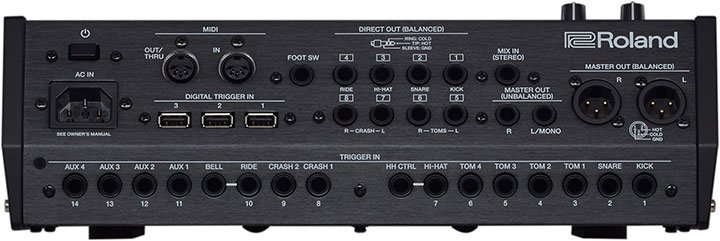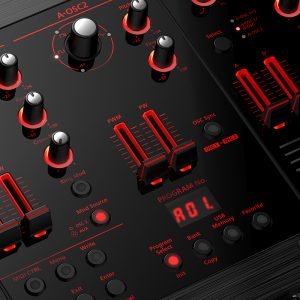More and more drummers – from beginners to experienced musicians – are considering electronic drums when they shop for a new kit. There are a number of reasons for the move to electronics, not least being the need for quiet play at home.
One of the biggest “mistakes” we see when people buy their first electronic kit is aiming too low. A lot of people think they’ll buy a basic kit, “see how it goes” and then “work their way up”, if necessary. Unfortunately, this often backfires, and instead of being motivated and stimulated by the new kit, the drummer can find the playing experience frustrating and be turned off the kit – and off drumming.
Experienced e-drummers often advise others to “buy your last kit first”. In other words, work out what you need and don’t settle for less.
1) Size does matter
One difference between entry-level kits and more advanced products is the size of the drum pads and cymbals. Sure, smaller kits take up less space and obviously cost less, but they can be harder to play, especially if you are used to “full-size” acoustic drums. While smaller pads are certainly playable, they do require more accuracy than bigger pads – and there’s always a risk that you’ll keep hitting the rims rather than heads, and triggering sounds you might not want.
Read more about the range of drum techniques that can be used on a V-Drums kit here.
2) Brain power
More advanced kits are powered by more sophisticated drum modules or ‘brains’. These are the computers that control the trigger response, apply the sounds and enable you to record and mix your music. Yes, even the most basic kits these days are pretty sophisticated, but the extra performance capability of advanced drum modules is nothing short of amazing. Most Roland modules, for example, have onboard sound editing capabilities that allow you to alter the tone, attack and decay of each instrument – and the higher up the range you go, the more powerful and subtle the editing.
3) Training tools
Almost all the kits in the Roland range have some built-in training/teaching tools like metronomes. But the more advanced kits have tools to check your accuracy and allow you to test yourself with increasingly difficult material. The more sophisticated kits come with recording tools that allow you to record your performance and listen back, which is an incredibly useful learning aid.
(embed Anika Niles playing the TD-17 in coach mode Kit Exercise with Roland TD-17 Series
4) Sound selection
One of the benefits of electronic drums is the ability to choose your own sounds. Unlike acoustic drums which have limited tuning ranges, you can get almost any sound out of an electronic kit. And the better the module, the more realistic the sounds – and the more choice you will have. The most advanced modules even let you import your own sounds, which is very useful for live performances or recording when you want to recreate a specific sound.
Here’s an example of just how quickly and easily different sounds can be played on a V-Drums kit.
5) More outputs mean more options

But you can always upgrade later …
People often ask if they can upgrade parts of their kit at a later time. The answer is ‘yes’ – Roland components are generally compatible forward and backward. So, if you had an ageing TD-10 kit, you could easily keep your pads and cymbals and add a new module to bring the kit into the 21st century.
Similarly, if you have recently bought a TD-27 kit, you could add an additional tom or crash cymbal, upgrade the hi-hat to the latest-generation digital version or replace any of the pads with larger mesh drums.
Although older pads and cymbals may work with newer modules, they are not optimised for them. In other words, you won’t experience the full power of the technology when you use
an older pad. For example, Roland’s positional sensing, amazing technology that emulates the changing tone of acoustic drums when you hit the head in different places, may not work for some older drum pads.
If you do want to follow the upgrade path, most of the components are available to purchase separately – from individual drum pads to modules. But new kits are priced way lower than the sum of all their components, so upgrading may not be the most cost-effective way to go.
Upgrading individual components makes sense under some circumstances, especially because people are able to easily sell off their used components in the healthy second-hand market, but if you’re aiming for a kit that will meet your needs for many years to come, you may as well make the jump and buy a complete set.
Buying basic is a false economy
It’s understandable that drummers, especially those only familiar with acoustic drums, may be hesitant about electronic kits.
But you can minimise your risk and any potential disappointment and frustration down the track by buying the right kit at the outset. If you’re not sure, try all the options in a drum store and feel and hear the difference.
- Does the kit delight you or is it “just good enough”?
- Will it inspire you to keep practising and playing for fun?
- Can you comfortably hit all the pads and cymbals and are there enough to give you all the sounds you’re looking for?
- If you’re planning to gig, will the kit provide the sounds you need and the output control required for the mixing desk?
New kits can be a significant investment, so it makes sense to buy wisely. But that doesn’t mean “buying cheap”. Instead, choose the kit that brings you joy because that’s the one you’ll keep. And you won’t have to start looking again in a few months when you “outgrow” your “starter” kit.










